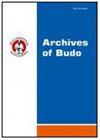Teaching in martial arts: The analysis and identification of teaching approaches in youth martial arts practice
IF 1.5
3区 医学
Q3 SPORT SCIENCES
引用次数: 18
Abstract
Background It is believed that martial arts can produce educational opportunities for youth. Therefore, some critical success factors have to be taken into account. One of these factors is considered as the type of guidance. However in martial arts, there is a lack of research examining the role of the martial arts teacher. Therefore, a study was set up to analyse different teaching approaches used in martial arts and to develop a framework aiming to identify these teaching methods. Material/Methods: A multiple instruments research design was set up, in which 20 teachers in aikido (n=5), karate (n=10) or kick-/Thai boxing (n=5) were involved. All of them were observed during a training session (i.e., informal interactive observation). Moreover, they were interviewed before and afterwards (i.e., pre-interactive and post-interactive interviews). The pre-interactive interview guide included questions regarding (a) the goal of teaching, (b) the didactical approaches, (c) the traditional aspects of martial arts, and (d) the problems encountered during training. During the post-interactive interview all subjects were asked to point out specific aspects of their teaching approach and to respond to an instrument specifically developed for this study, which consists of seven dimensions to identify different teaching approach (i.e., TAMA, Teaching Approach in Martial arts framework). Results: Based on the total scores of TAMA, martial arts teachers were classified into three groups. Those with the lowest scores were classified as representatives of a traditional teaching approach, with medium scores as teachers using an educational sporting approach and with the highest scores as those using an efficiency approach. In short, teachers using a traditional teaching method emphasised traditional aspects and pedagogically oriented aims. Martial arts teachers situated in the educational sporting group were still focused on the traditional aspects, but considered martial arts rather more as a sport. And finally, the focus of teachers using an efficiency approach was on competition and the development of performing skills. Conclusions: Differences are clearly identified in the teaching approach used by teachers of different martial arts (i.e., aikido teachers use a traditional approach while kick-/Thai boxing teachers show an efficiency approach), as well as within one martial art (i.e., karate teachers use all three approaches). The development of TAMA was the first onset to identify different teaching approaches in martial arts. In order to generalise the results of the present study further research is recommended武术教学:青少年武术实践教学方法的分析与认同
人们认为武术可以为青少年提供教育机会。因此,必须考虑到一些关键的成功因素。其中一个因素被认为是指导的类型。然而,在武术中,缺乏对武术教师作用的研究。因此,一项研究旨在分析武术中使用的不同教学方法,并制定一个旨在识别这些教学方法的框架。材料/方法:采用多仪器研究设计,选取合气道(n=5)、空手道(n=10)、踢拳/泰拳(n=5)教师共20人。所有这些都是在训练期间观察的(即非正式的互动观察)。此外,他们还接受了之前和之后的访谈(即互动前访谈和互动后访谈)。互动前的访谈指南包括以下问题:(a)教学目标,(b)教学方法,(c)武术的传统方面,以及(d)训练中遇到的问题。在互动后的访谈中,所有受试者都被要求指出他们的教学方法的具体方面,并对一个专门为本研究开发的工具做出回应,该工具由七个维度组成,以确定不同的教学方法(即TAMA,武术框架中的教学方法)。结果:根据TAMA总分,将武术教师分为三组。得分最低的教师被归类为传统教学方法的代表,得分中等的教师使用教育体育方法,得分最高的教师使用效率方法。简而言之,使用传统教学方法的教师强调传统方面和以教学为导向的目标。位于教育体育组的武术教师仍然关注传统方面,但更多地将武术视为一项运动。最后,教师使用效率方法的重点是竞争和表演技巧的发展。结论:不同武术教师使用的教学方法(即合气道教师使用传统方法,而踢腿/泰拳教师使用效率方法)以及一种武术(即空手道教师使用所有三种方法)中存在明显差异。TAMA的发展是第一次开始确定不同的武术教学方法。为了概括本研究的结果,建议进行进一步的研究
本文章由计算机程序翻译,如有差异,请以英文原文为准。
求助全文
约1分钟内获得全文
求助全文
来源期刊

Archives of Budo
SPORT SCIENCES-
CiteScore
2.80
自引率
47.60%
发文量
0
审稿时长
>12 weeks
期刊介绍:
Archives of Budo is an international peer reviewed journal publishing articles on various aspects of the sports sciences covering education and research in martial arts and combat sports, and related areas like biomechanics, kinesiology, medicine, psychology, sociology, technologies of sports equipment, research in training, selection, performance, survival, and other interdisciplinary perspectives.
Archives of Budo editors endorse the principles embodied in the Helsinki Declaration and expect that all research involving humans has been performed in accordance with these principles. All human studies must have been approved by the investigator''s Institutional Review Board. A copy of the relevant documentation should be included with the manuscript. Furthermore Archives of Budo follows the ICMJE''s Recommendations for the Conduct, Reporting, Editing and Publication of Scholarly Work in Medical Journals.
Archives of Budo provides free, immediate and permanent online access to the full text of all articles distributed under the terms of the Creative Commons Attribution Non-commercial License http://creativecommons.org/licenses/by-nc/4.0), which permits use, distribution, and reproduction in any medium, provided the original work is properly cited, the use is non-commercial and is otherwise in compliance with the license.
 求助内容:
求助内容: 应助结果提醒方式:
应助结果提醒方式:


